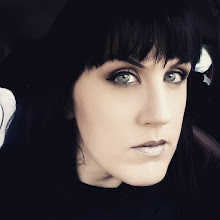Colin "Mr Darcy" Firth plays George VI, or 'Bertie', the stammering Duke of York whose attempts at overcoming his problem just aren't working. Helena Bonham-Carter plays his wife, who went on to become the Queen Mother, who eventually enlists the help of Lionel Logue (Rush), an Australian chap whose methods have come highly recommended. His unorthodox approach breaks down the class boundary between him and Bertie, and you get a sense of a real camaraderie between the two. The entire film drives towards the big showdown, in which Bertie's final confrontation is essentially with himself as he faces giving his first wartime speech to the nation.
I had a lisp as a youngster, so I always find it easy to sympathise with characters who suffer from speech impediments (with the exception of Kripke in The Big Bang Theory - but I think he's supposed to be insufferable). But would I have sympathise with just anyone with a problem? I don't think so. Firth plays Bertie as being very human, subject to workplace anxieties and stress. Sure, not all of us have to deal with the problems associated with being a member of the Royal Family, but Bertie is in a position in which all the wealth and privilege in the world just won't help. In fact, I found I almost sympathised with him more for being a prince rather than having a speech impediment. We might look at the Royal Family and consider them everything from "idle scroungers" to whatever other epithet seems to be most offensive at the time, but imagine being born into an existence in which your life is not really your own, and you're not free to pursue the same dreams as everyone else. I'd hate it.
I've been a fan of Firth's since 1995, and that adaptation of Pride & Prejudice, and I always enjoy watching Bonham-Carter. It's particularly nice to watch her in a non-Burton role, where she actually gets to act instead of stomping around with big hair, screeching and emoting all over the place, and her likeness to the Queen Mother is unnerving. But really, the real star of the film is Rush, whose homely chatter and refusal to be cowed by Bertie's status is possibly what gets through to Bertie in the first place. Logue doesn't treat Bertie like a prince, so Bertie doesn't have to feel the weight of responsibility within Logue's office. He can just be Bertie. I was pleased to see at the end of the film that even when he became King, he remained friends with Logue. Just like he stole Pirates of the Caribbean from under the nose of Johnny Depp, so Geoffrey Rush steals The King's Speech.
Sure, it doesn't have monsters or fairytale creatures, but The King's Speech is a lovely little film, telling the story of one man's desire to overcome a simple, and very human, problem. I'll leave you with a clip of that magnificent speech.









